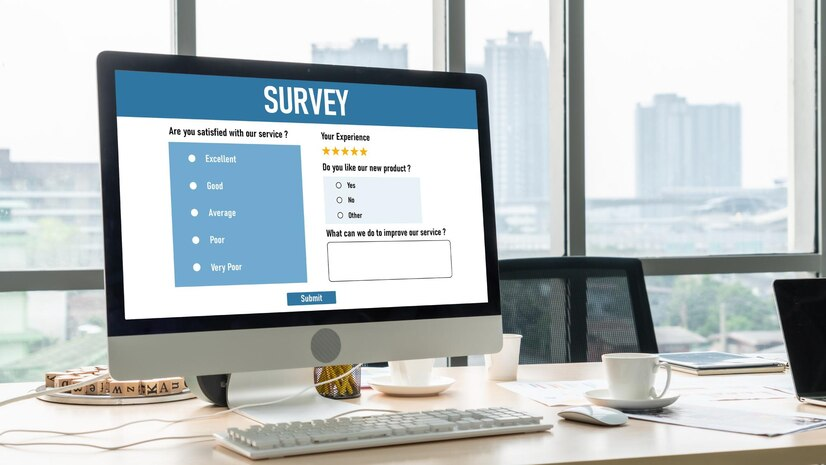26 June 2024 |
By - Sudha Mariappan

Many times, when you search for something on the internet, you might have come across some interesting quizzes to learn about your personality type, or what type of animal you are.
This type of content piques the user’s curiosity so much so that they end up solving the quiz.
Similarly, when a user is engaged with content enough that they are satisfied, they are inclined to react. The reaction may be through likes, shares, and comments on the content.
This is called Interactive content.
It is going to be one of the key trends that will change how businesses interact with their audiences. With the flood of information that people are getting today, it is not enough to simply push static content and wait for audience engagement.
Your content will go stale with your static content.
As modern consumers seek learning experiences that are not only informative but engaging and immersive, interactive content comes into play. Whether it is the marketer seeking to increase user engagement or the business leader looking for brand loyalty, interactive content has the ability to transform strategy in both its implementations.
Traditional content formats like blogs and static images are powerless in engaging with the connected consumers of today. Interactive content provides a solid solution, including components with which users can engage rather than passively consume.
If engaging your audience becomes a challenge, then making them more connected can create better results for you in the marketplace.
What is Interactive Content?
Interactive content is digital content that provokes user engagement through active participation rather than passively consuming it.
In traditional content, a user simply reads or views the content, whereas in interactive content, the user has to engage with the content and often requires related, personalized feedback or results that can take many forms, from quizzes and polls tointeractive infographics and calculators.
Interactive content makes the user experience engaging, it often makes the content enjoyable, and transforms the experience of what could be a passive read or view.
For example, a quiz on which product is most suitable for a user's needs is infused with entertainment and also gives them great value. Such content makes use of users' innate curiosity and drive to interact so that this experience becomes more memorable and impactful.
Personalization can occur when businesses make their audience part of their process for creating content. Not only does this activity secure attention, but it can also help in sustaining it. This increases the possibility of users engaging with your brand and its content in the future.
KEY TAKEAWAYS:
- Definition: Interactive content means that users participate and it gives them personalized feedback.
- The main trend that changes the way businesses connect with their target audiences is interactive content.
- Online quizzes and other interactive content behold user curiosity and provide better engagement.
- Engaged users are likely to react to the content by liking, commenting, and sharing.
- Static content does not engage the modern consumer as much, and it will continue to fade.
- Today's consumers expect both information and entertainment in their content and would like to have their learning entertainingly engaging.
Benefits of Interactive Content:
1.Enhanced User Engagement:
Interactive content would naturally encourage users to spend a bit more time on your site or platform. Engaging users through activities like quizzes, surveys, increases the amount of time that users can spend on interacting, consequently reducing bounce rates. This deeper engagement might result in a better connection with your audience and ultimately build loyalty.
2.Collecting Data and Gaining statistics:
A vast volume of data regarding preferences and behaviors is generated while users engage with this content. All this information comes in very handy for personalizing your marketing strategies and making improvements in your products or services. The interactive content works as a means to gather actionable insights without giving the user the feeling of filling out a survey.
3. Better User Experience:
It can also be made more delight driven and less monotonous with interactive content. Interactive elements, like infographics or calculators, add value by either simplifying complex information or showing personalized results which improves the overall user experience. Therefore, making it more memorable and impactful on your content.
4. Higher Conversion Rates:
It can engage a user far more effectively through the sales funnel by giving them recommendations or solutions tailored to their problem. For example, users of a product recommendation quiz will find the best product for their needs with much ease, and chances of buying are maximized. This is specifically called personalization, which very strongly increases conversion rates.
5. Increased brand awareness:
Business organizations can leverage unique and engaging content experiences as a way to rise above the crowd of competitors in the market. In most cases, interactive content becomes quite highly shareable as compared to other traditional types, which raises its reach and view tremendously. This can help build brand awareness and attract a wider audience.
5 Techniques to Keep Your Audience Hooked:
1. Quizzes and Polls:

Quizzes and polls are among the most effective engagement tools that will keep an audience hooked till the very end. They can easily be created based on any topic relevant to them. Flipkart, for example, holds frequent quizzes on its app.
These engage users in a gamified way while sending in subtle product promotions. Quizzes can be anything from personality tests to knowledge tests. The result is that the user gets feedback on their answers instantly and often involves customers’ sharing them on social media, thus enhancing your reach.
2. Interactive Infographics:
Interactive infographics are simply the evolution of traditional infographics, allowing users to interact with the information being provided. This can include clickability, animation, popup windows just about any series of features that give more detail or context about the information presented in the graphic.
For example, Zomato uses interactive infographics to share data on restaurant trends and enables users to work through the information in a more engaging manner. This keeps users engaged but makes complex information more digestible.
3. Calculators and Tools:
This can be a big value addition to users if the calculators and tools could be made to interact in a manner that they provide personalized information or suggestions to the user.
For example, multiple calculators have been incorporated into the website of Policybazaar for users to calculate their premiums or compare insurance plans. Not only are these tools engaging for users, but they also help in decision making which helps building trust and experience.
4. Interactive Videos:
Under any scenario, videos prove to be very engaging over and over again. Then interactive videos make a grand entry, where viewers can make their choices which change the content. This could be choosing different outcomes or looking at different features of the product.
For example, Tata Motors uses interactive videos for showcasing vehicle features to users who can self direct explore various aspects of the cars. This level of involvement can contribute to interest in the content for users and curiosity about products featured.
5. Contests and Giveaways:
Contests and giveaways are an excellent way to engage audiences in participation. They could be held on your social media or website, capturing the necessary traffic and visibility for your brand.
For example, Myntra holds contests related to their products. They ask users to participate in it by tagging them to win a voucher or product. This kind of contest increases engagement and at the same time enables user-generated content, which could be used for marketing purposes.
Gamification through leaderboards and rewards systems creates or improves interactive content that increases user participation and loyalty. If you want your users to engage more with your content or brand, then provide them with concrete benefits.
Also read: Marketing to GenZ with Creative Video Content
What Kinds of Interactive Content Can You Create?
Quizzes: When quizzes are light-hearted, interesting, informative, and educational. It will provide valuable insights in an interactive way to users.
Polls: Polls help in getting opinions from users and spur engagement.
Interactive Infographics: Visually appealing informative posts that users can click on to understand a given single piece of information in detail.
Calculators: Provide calculators that give suggestions or customized estimates.
Interactive Videos: Come up with videos having interactive features that would let a user pick their path or explore features.
Integrating these forms of interactive content into your digital marketing strategy will drive more engagement with users, capture useful data, and get better business results.
Subscribe to our blog section for more such information. Make sure to check out our website to avail yourself of the services we offer at Ontogen Digital, a leading Digital Marketing agency. Connect with us at info@ontogendigital.com to learn more.